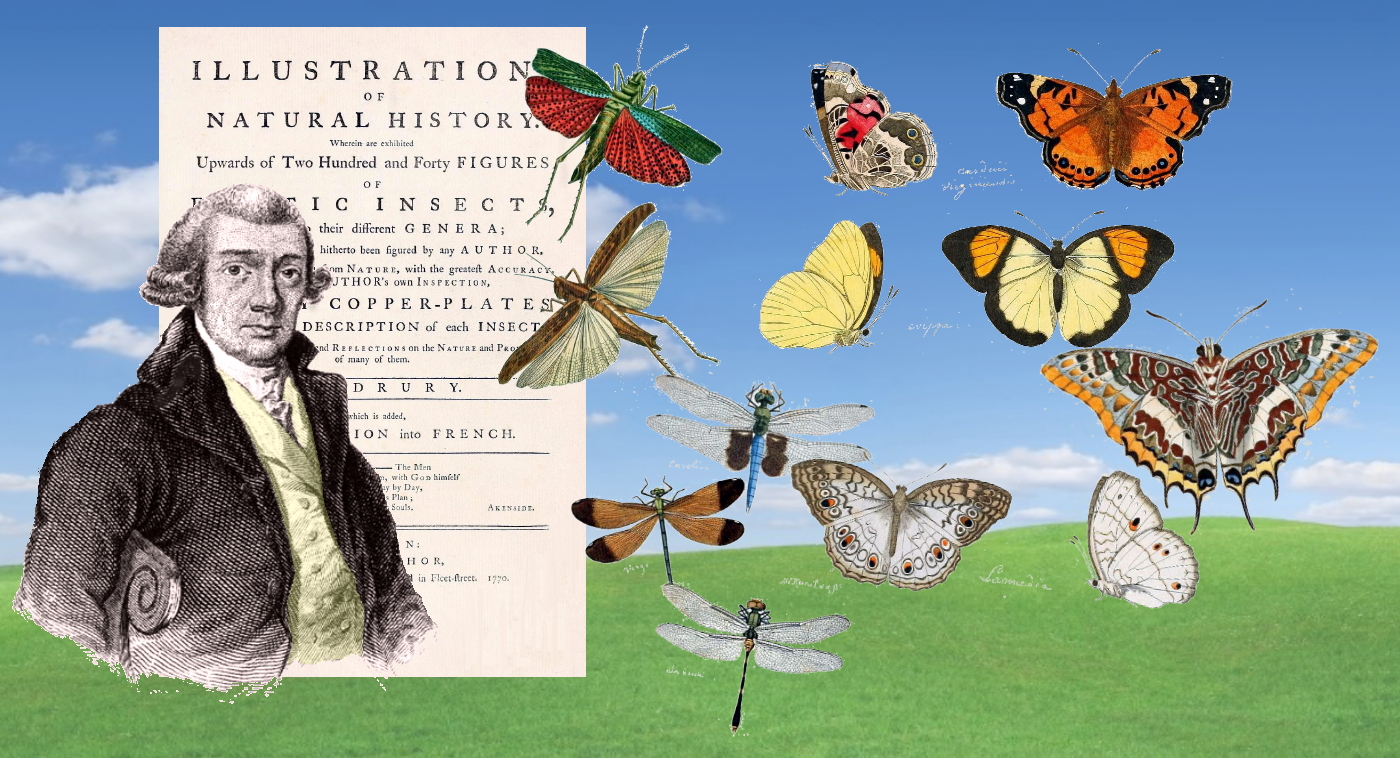Some Hobby!
On February 4, 1725, English entomologist Dru Drury was born. Working as a silversmith and properties owner, Drury supported himself, his family, and his evolving passion for his bug collecting hobby.
He became one of England’s foremost names in the scientific study of insects or entomology and carried on lengthy and detailed correspondence with peers including Carl Linnaeus and William Kirby, each of whom named insects after him. Drury enlarged his understanding through his correspondences with other collectors about insect life histories, ecosystems, and collectors’ preservation techniques.
After decades of collecting, trading, and buying specimens, Drury engaged the talented water colourist and engraver, Moses Harris, to capture their beauty and colour and, where possible, their texture. As carefully as Harris rendered his illustrations, Drury rendered his corrections until he felt they were as close to perfection as the printing process could take them.
Drury chose the best and most exotic examples from his insect collection, divided into Order, Genus, Class, and Species of his day according to Linnaeus’ classification. For each specimen, Drury described the body features with great care. This special collection is contained in Illustrations of Exotic Entomology, Containing Upwards of Six Hundred and Fifty Figures and Descriptions of Foreign Insects, Interspersed with Remarks and Reflections on Their Nature and Properties.

Published over the span of two decades, these three volumes are packed with loving attention to detail and personal asides.
Although an amateur collector without formal training in the science of entomology, Drury reveals an intellect captivated by his subject and itching for knowledge. He believed insects were of great value not only to their environments but also to the human species that share those environments. Insects fed some animals, controlled other animal populations, aided composting, and indicated the good or ill health of their ecosystems. He speculated that insects were sure to provide effects of which humankind were presently ignorant but might prove valuable in medicine or other discipline yet undiscovered.
For his readers and future entomologists, Drury’s every speculation held quiet challenge. In each volume, inspiration.
A few decades after Drury’s death, his work inspired the great insect taxonomist, J. O. Westwood, to publish a respectful new edition of Drury’s compendium. To the already detailed title, Westwood added the words Brought Down to the Present State of the Science, with the Systematic Characters of Each Species, Synonyms, Indexes, and Other Additional Matter.
How Knowledge builds!
B Bondar / Real World Content Advantage